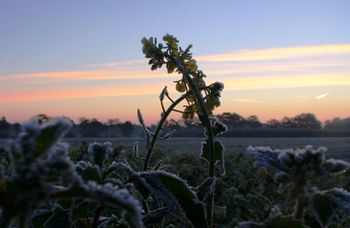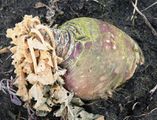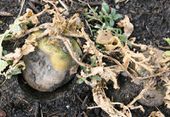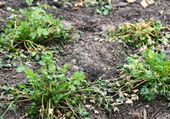Difference between revisions of "Winter garden"
| Line 11: | Line 11: | ||
File:Small turnip after frost 120217.JPG|A smaller [[turnip]] species, it's entirely gone. | File:Small turnip after frost 120217.JPG|A smaller [[turnip]] species, it's entirely gone. | ||
File:Brussels sprouts after frost 120217.JPG|[[Brussels sprouts]] can withstand frost, but nevertheless these plants have been affected | File:Brussels sprouts after frost 120217.JPG|[[Brussels sprouts]] can withstand frost, but nevertheless these plants have been affected | ||
| + | File:Celery cold frame after frost 120217.JPG|[[Celery]] plants in a cold frame. These plants were sown in the summer and had little difficulty. | ||
| + | File:Chard after frost 120217.JPG|A [[chard]] plant. It did survive but won't be good for consumption anymore. It will probably flower and gives seeds. | ||
</gallery> | </gallery> | ||
[[Category:Gardening]] | [[Category:Gardening]] | ||
[[Category:Gardening topics]] | [[Category:Gardening topics]] | ||
Revision as of 06:28, 18 February 2012
- Topic in Gardening courses
Winter is a time of waiting and preparing for a gardener. But there are some crops that you harvest in winter or that you can sow in autumn and, after surviving winter frost, give you an early harvest in spring. Some vegetables are typical winter crops, such as chicory, kale and Brussels sprouts. Yet there are more vegetables of the winter garden.
Photo gallery of vegetables after frost period
All these photos were taken after a few weeks with continuous freezing temperatures down to sometimes -4 F (-20 C). The situation was quite special in this winter as this cold period in late January and early February was preceded by a very warm November and December. I had sown and planted winter crops in October and November in my garden, cold frame and unheated greenhouse, and all of them had grown as they would have done in early spring. Those plants suddenly got to deal with deep frost over an extended period.
These beetroot plants were sown ca. August. They were covered with straw before it began to freeze. I don't yet know if they will survive, but it looks like they will do.
A smaller turnip species, it's entirely gone.
Brussels sprouts can withstand frost, but nevertheless these plants have been affected
Celery plants in a cold frame. These plants were sown in the summer and had little difficulty.
A chard plant. It did survive but won't be good for consumption anymore. It will probably flower and gives seeds.







